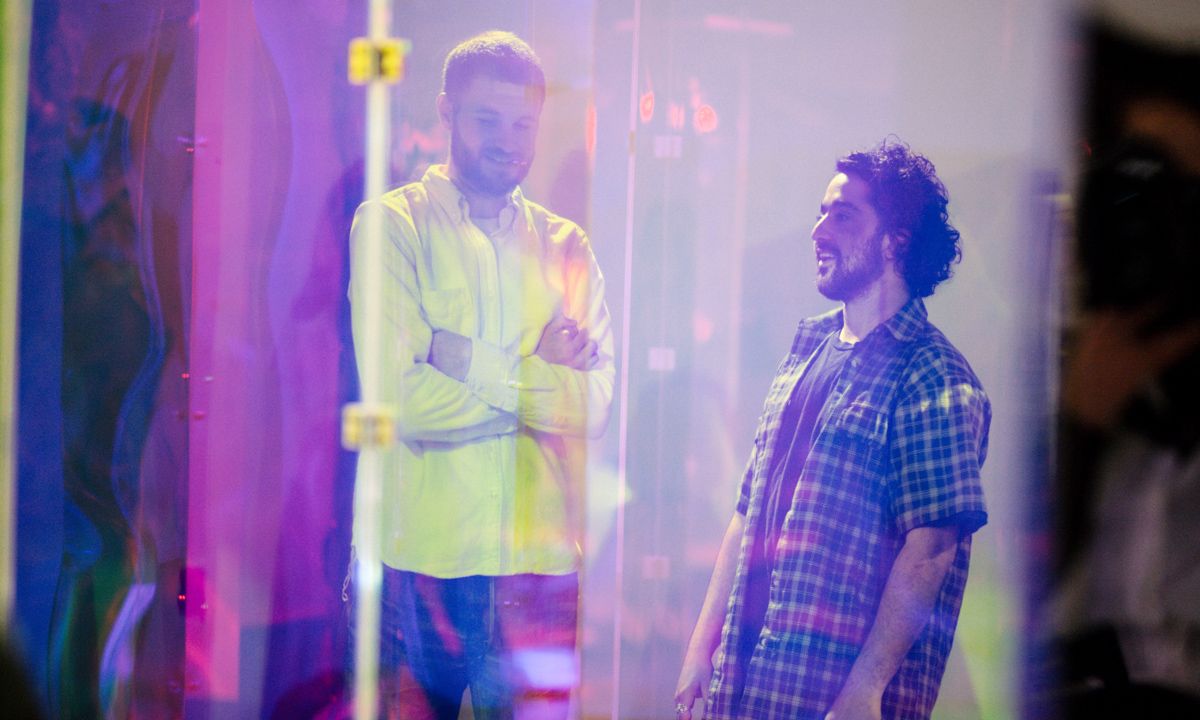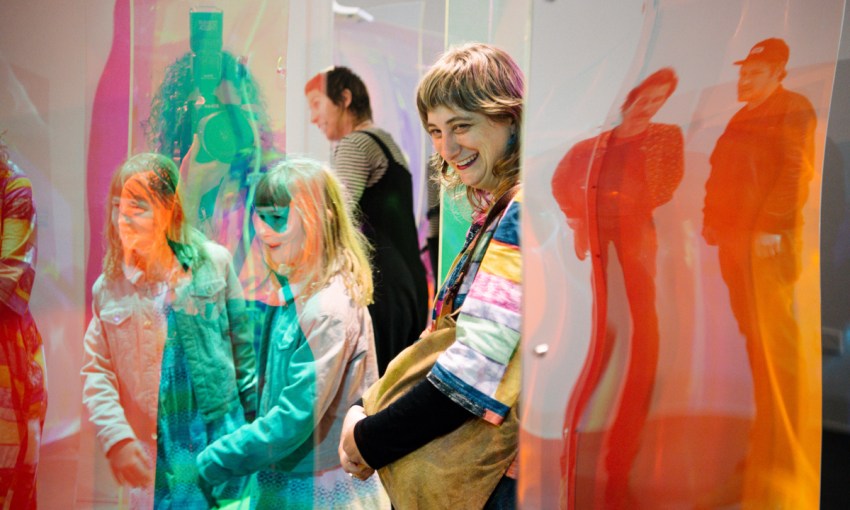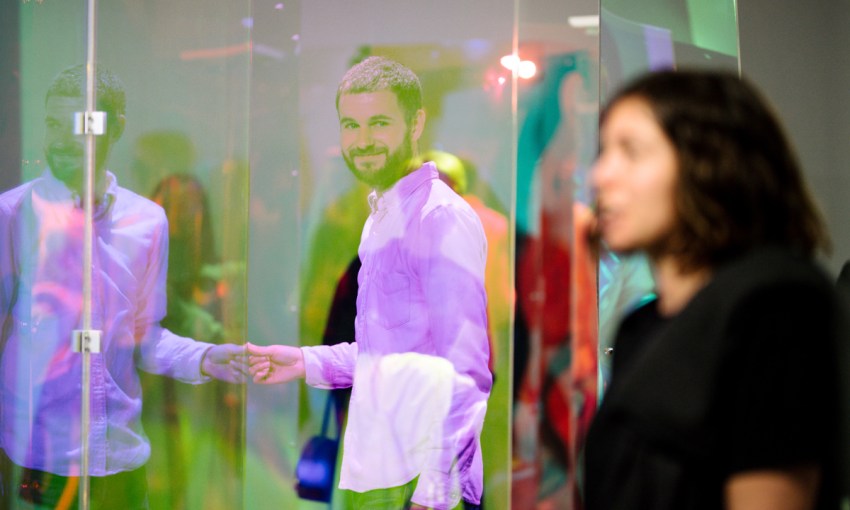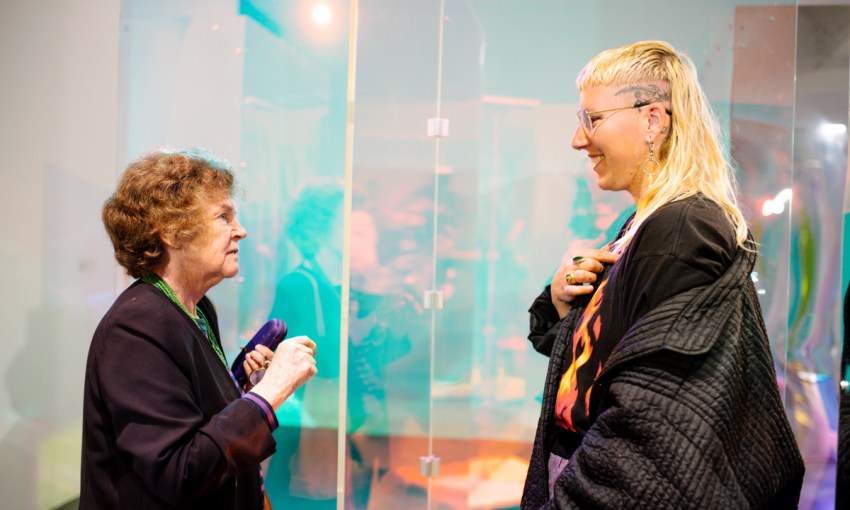Artist Yusuf Hayat’s kaleidoscopic installation for ACE Open’s 'If the future is to be worth anything' is a view into a more beautiful, connected world.
Through a glass brightly
Yusuf Hayat’s artwork for ACE Open’s 2020 South Australian Artist Survey is made of clear, iridescent Perspex panels and throws light across the room in multitudinous shades, tones and directions. It’s bright and joyous. It also contains a depth of meaning.
The work is built off Yusuf’s encounter with a piece of architectural film called dichroic.
“It’s this amazing material,” Yusuf says. “It shifts with your perspective.
“There’s two different types that I’ve used in the installation, and it shifts through this range of colours, and I just kind of loved, immediately, that it draws you into the uniqueness or the particularity of your perspective.”
Yusuf only committed to his art full-time in the last few years, after a career spent in social work in the UK and Australia. Through companies like Common Ground, Red Cross and the Salvation Army, Yusuf would work with people from a wide range of experiences, including people experiencing homelessness and migrants who had been through the asylum and detention process.
Yusuf’s artwork is often imbued with themes stemming from his former career, as well as from his experience growing up as the son of Indian parents in the UK.
His exhibition piece, Baab Al-Salaam, raises many questions about the role perspective plays in the ways humans often differ in our understanding of our world and each other, all through the shimmering of the film.

“You and I are both looking at the same panel, but we’re going to see completely different colours because of where we’re standing, and it’s exactly the same panel,” Yusuf says.
“It’s that sort of sense of, it’s completely down to, each one of us, our own individual, unique, particular perspective and position, and we each have one, and everyone’s position is perfectly valid.
“But it also does this really magical thing – it both reflects light and it transmits light. So you can see through it, but you can reflect back as well. You can line yourself up with another person and you can merge into each other.
“There’s something in the idea of empathy that has to start from who you are, not collapsing yourself into the other person. This felt like, ‘Ok, I’m still me and I’m still holding onto who I am, and I’m not just looking at a reflection, I’m not looking through to another person as an object for me to study and understand, but I’m seeing that we’re in a complete relationship.’”
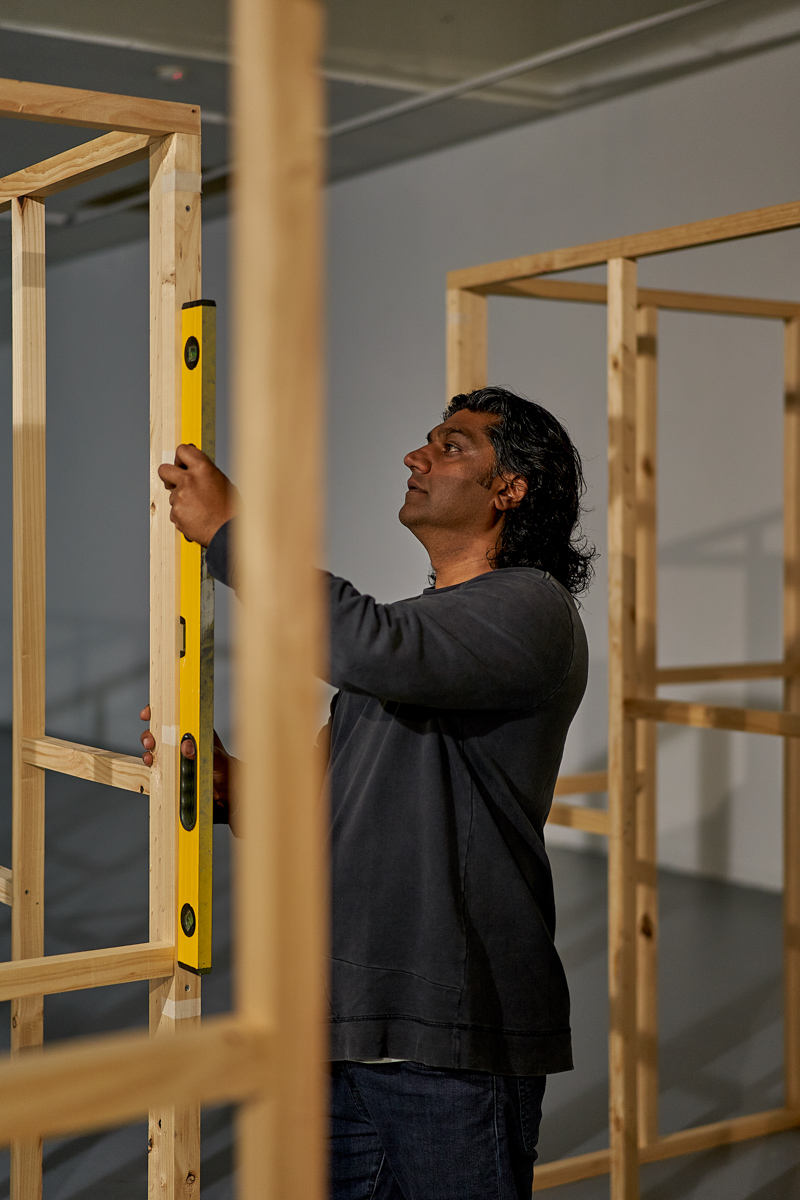
Yusuf Hayat. This image: Sam Roberts
The artwork’s physical presence brings in more layers. Baab Al-Salaam is the name of one of the gates at the Great Mosque of Mecca in Saudi Arabia. The phrase translates to ‘Gate of Peace’. Some of the artwork’s panels operate as revolving doors, which are intended to be navigated.
Yusuf grew up in England and now lives in Australia – two countries which exalt their multicultural ideals. In reality, “it can feel like a very superficial engagement,” he says.
“You might sit next to someone on the bus, but you’re not really [engaging with them]… People back into their own.”
In Baab Al-Salaam, Yusuf made genuine connection between any two people interacting with the work at the same time necessary.
“The revolving doors can close you in… so you can end up in this little bubble,” Yusuf says. “So you can either enclose and entrap, or you can find a way to collaborate and negotiate and open and move through the space.
“It was, ‘How do we find the space where you have meaningful engagement, meaningful encounters?’ You have shared goals and you think about this as collaboration and communication. Not just coexistence, but actively trying to work together.”
These are heavy themes, Yusuf admits, which is why the work looks the way it does – approachable, colourful and full of light.
“I wanted that to be an experience of joy and wonder and fascination,” Yusuf says. “The bright colours really helped that sense of, things you don’t know as something that can be a good experience, that’s colourful and joyful, not necessarily fear and denigrate and xenophobia.
“It’s going the other way, of being excited by difference, by the stranger, by the potential that [an] encounter might open up for us.”
